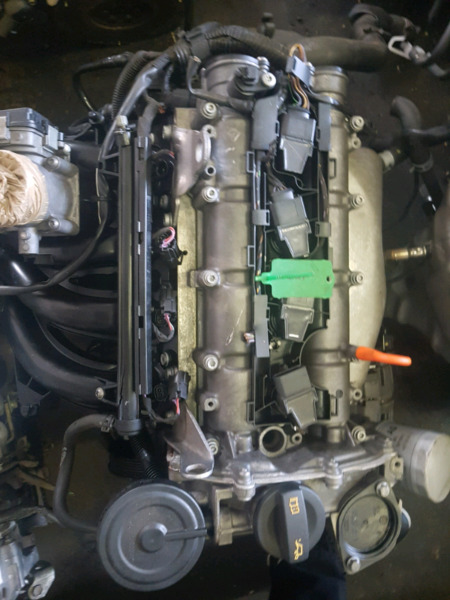Lower maintenance costs with a well-built clp engine.
How a Clp Engine Can Improve Performance in Numerous Industries
The advent of CLP engines marks a considerable change in operational performance across various industries, driven by their ability to maximize fuel consumption and decrease downtime. Industries such as manufacturing and logistics stand to get considerably from their robust style and regular power outcome, which promise to improve operations and boost productivity. As companies significantly prioritize sustainability along with performance, the duty of CLP engines comes to be a lot more critical. What stays to be seen is exactly how these advancements will certainly shape the future landscape of commercial operations and their effect on more comprehensive economic patterns (clp engine).
Introduction of CLP Engines
CLP engines, or Constant Fluid Propellant engines, stand for a significant advancement in propulsion technology, especially for room applications. These engines make use of a continual feed system that permits the continual expulsion of propellant, bring about enhanced efficiency and performance compared to typical solid or hybrid propulsion systems. By keeping a continuous flow of fluid propellant, CLP engines can attain much more precise thrust control, which is critical for maneuvering spacecraft in different objective situations.
The design of CLP engines integrates advanced products and ingenious fuel administration systems. clp engine. This causes lowered weight and boosted dependability, necessary aspects for long-duration area goals. The continual operation decreases the threat of combustion instability, a common difficulty in standard rocket engines.

Benefits in Production
The manufacturing of Continuous Liquid Propellant (CLP) engines offers a number of remarkable advantages that boost both effectiveness and cost-effectiveness. Among the primary benefits is the structured production process, which decreases the intricacy linked with typical propulsion systems. By using fluid propellant, producers can achieve higher accuracy in engine efficiency, leading to maximized energy result and minimized waste.
Furthermore, CLP engines help with a higher degree of modularity, permitting for less complicated combination into numerous production lines. This adaptability can substantially reduce preparations and enhance general operational flexibility. The usage of CLP innovation also tends to lessen the requirement for comprehensive maintenance due to less moving components, which equates right into reduced downtime and functional prices.

Applications in Logistics
Leveraging Continual Liquid Propellant (CLP) engines in logistics uses significant advantages in operational performance and dependability. These engines give a robust remedy for various transport requirements, making it possible for the seamless movement of items throughout substantial distances. The inherent style of CLP engines enables regular power result, which converts into smoother and more predictable transportation timetables.
One of the vital applications of CLP engines in logistics remains in sturdy freight transportation, where they can drive both ground and aerial lorries. Their capability to maintain high efficiency under differing tons problems makes certain that delivery timelines are satisfied, thus improving client complete satisfaction. Furthermore, CLP engines can be incorporated dig this into automated logistics systems, facilitating real-time monitoring and optimizing path preparation.
In addition, the resilience of CLP engines reduces maintenance downtime, permitting logistics companies to maximize their functional capacities. This is especially advantageous in warehousing operations, where efficiency in dealing with and moving goods is crucial. As logistics remains to evolve, the assimilation of CLP engines stands for a forward-thinking strategy that not only improves performance yet additionally sustains the market's growing needs for dependability and speed.
Effect On Power Effectiveness
How do Continual Liquid Propellant (CLP) engines enhance energy efficiency in transport? CLP engines utilize a consistent flow of liquid fuel, maximizing combustion procedures and keeping a steady drive outcome. This layout decreases energy losses related to conventional burning engines, where gas shipment can vary and lead to inefficiencies.
The continuous procedure of CLP engines permits an extra effective thermal cycle, leading to greater certain impulse contrasted to standard engines. clp engine. This equates to minimized gas consumption for the same quantity of job done, considerably decreasing operational prices throughout numerous transport sectors, consisting of aeronautics and maritime industries
Moreover, the ability of CLP engines to preserve optimum performance under varying load conditions decreases the requirement for frequent velocity and slowdown, better boosting gas effectiveness. Enhanced energy efficiency not only contributes to cost savings however likewise causes decrease greenhouse gas discharges, straightening with international sustainability objectives.
Future Trends and Innovations
Emerging developments in Continual Fluid Propellant (CLP) engine innovation assurance to transform the landscape of transportation performance and sustainability. As sectors pivot toward greener alternatives, use this link CLP engines stand at the leading edge, integrating cutting-edge products and style methodologies that boost efficiency while decreasing ecological impact.
One of one of the most appealing patterns is the fostering of hybrid systems that incorporate CLP engines with renewable energy sources. This harmony can maximize fuel consumption and reduce emissions, aligning with international sustainability goals. In addition, innovations in computational liquid dynamics (CFD) are facilitating the design of even more aerodynamically efficient engines, bring about decreased drag and boosted gas effectiveness.
Additionally, the advancement of smart monitoring systems is established to enhance functional performances. These systems utilize information analytics and IoT modern technology to optimize engine efficiency in real-time, ensuring that the engines operate within their most efficient you could try this out parameters.
As research proceeds to discover alternative propellant solutions-- such as biofuels and synthetic gas-- the future of CLP engines looks appealing. By taking advantage of these technologies, sectors can not only improve their performance but additionally add significantly to a cleaner, more sustainable future in transportation.
Conclusion
In conclusion, CLP engines stand for a considerable advancement in effectiveness across several industries. The assimilation of innovative materials and fewer moving parts reduces maintenance needs, while positioning with sustainability objectives positions CLP engines as an essential modern technology for the future.